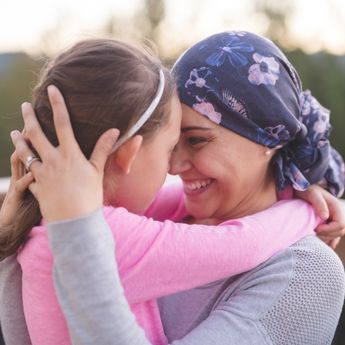By Tracy Gardikiotis
Breast cancer-related lymphedema is abnormal swelling that can develop in the arm, hand, breast, or torso on the side treated for breast cancer where lymph nodes have been removed. Lymphedema can develop suddenly or gradually. It can happen soon after surgery or can develop months or years later.
While there is no way to know for sure whether you will develop lymphedema, you can help yourself by learning about lymphedema, what your risk factors are, and what steps you can take to reduce your risk and recognizing early signs and symptoms.
The lymphatic system helps the body to fight infection and it helps to regulate the balance of body fluids by transporting lymph fluid throughout the body. When lymph nodes or lymphatic vessels are damaged by breast cancer treatments, the lymph fluid can build up in the tissues causing swelling. This swelling is lymphedema.
Risk factors for developing lymphedema after breast cancer treatment include:
-
Lymph node removal (sentinel node biopsy or axillary dissection)
- Radiation therapy to your chest, armpit and/or neck
- An infection or seroma after surgery
- Injury to your surgical area or the affected arm
- Weight gain after treatment, or being overweight
Things you can do that may lower your risk:
-
Exercise and stretch your muscles on a regular basis. Don’t overwork your body; if you feel discomfort, take a break.
- Maintain or safely work towards a healthy body weight.
- If you get a cut or scratch on your at-risk arm or hand, clean the area with soap and water and apply antibacterial ointment. Cover the area with a bandage.
- If you get a burn on your at-risk arm or hand, apply a cold pack or cold water for 15 minutes, clean the area with soap and water, and cover it with a bandage.
- Watch for signs of infection, including redness, swelling, increased heat, or tenderness.
- Be wary of blood draws and injections in your at-risk arm:
- If you had a sentinel lymph node biopsy, it’s better to have your blood drawn and shots given on your arm that’s not at risk for lymphedema. However, you can use your at-risk arm if needed. Inform the health provider of your risk to ensure they take necessary precautions.
- If you had an axillary lymph node dissection, always use your arm that’s not at risk, unless your doctor tells you it’s okay.
- If lymph nodes were removed on both sides of your body, talk with your doctor about which arm would be safest to use or other parts of the body.
- Use sunblock with an SPF of at least 30. Reapply it often.
- Use insect repellent to avoid stings and bug bites.
- Use a lotion or cream daily to help protect the skin on your at-risk arm and hand
- Wear gloves when washing dishes, gardening, or cleaning with harsh detergent.
- Be careful if you shave under your at-risk arm; consider using an electric razor.
- Avoid tight or heavy jewelry or clothing that has tight elastic and leaves a mark on your arm.
Some mild swelling after surgery is normal and may last for up to six weeks, but it’s temporary and will gradually go away. You may also feel pain or other sensations after surgery, such as twinges and tingling as nerves are healing. These feelings are common and aren’t necessarily signs of lymphedema.
Stay tuned for Part 2 as we look at early signs and treatments for lymphedema.
Tracy Gardikiotis is a physical therapist (BScPT), Certified Lymphedema Therapist (CLT-LANA), and Certified Cancer Exercise Specialist (CCES). She is also a Canadian Lymphedema Framework board member.
References:
NLN Medical Advisory Committee. (2012, May). Lymphedema Risk Reduction Practices. Retrieved from http:/www.lymphnet.org on March 13, 2019.
Memorial Sloan Kettering Cancer Center. (2017, July). Common Questions After Breast Cancer Related Lymphedema. Retrieved from htttp/mskcc.org on March 13, 2019.








